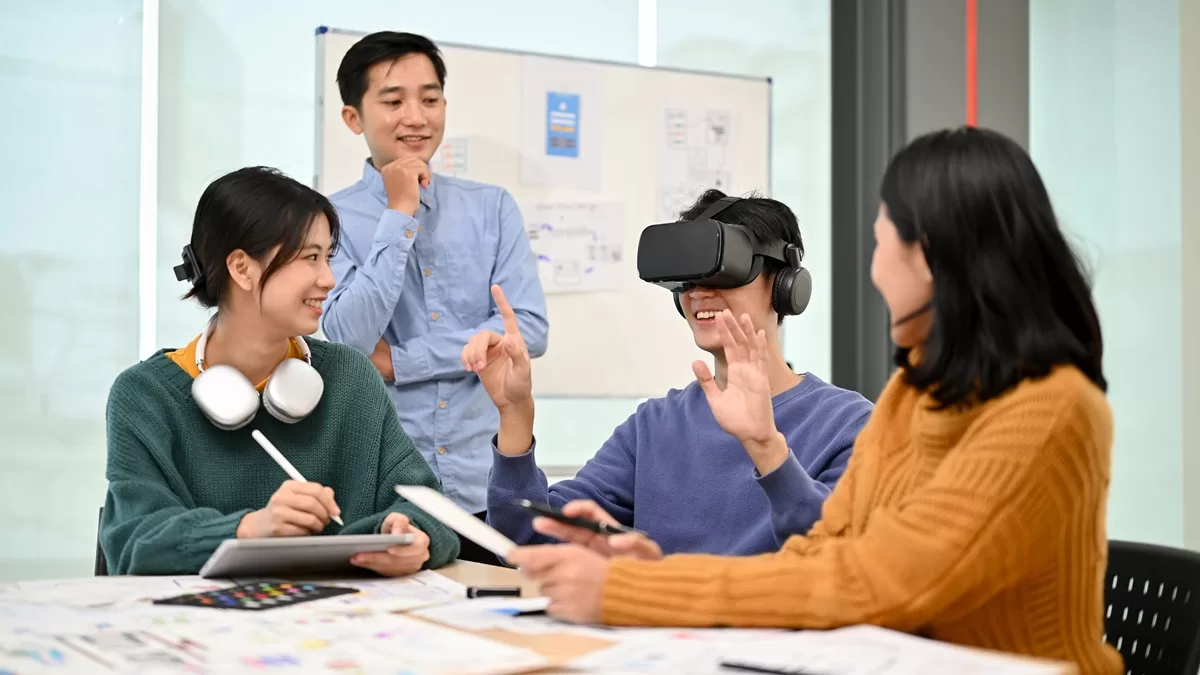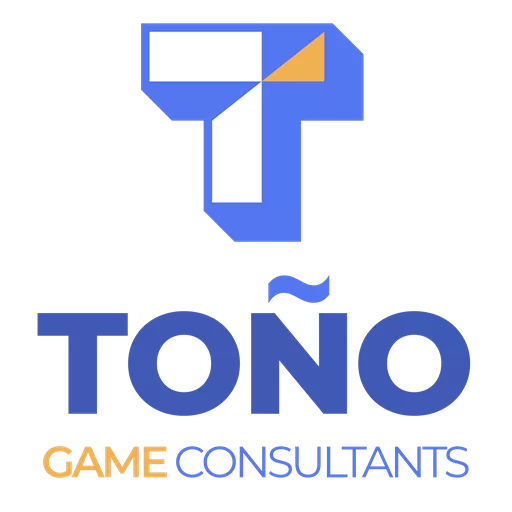Imagine this: you’ve spent months building your dream game. The concept feels gold, the art looks fantastic… but when players finally test it, the gameplay just doesn’t click. They’re confused, or worse, bored.
What went wrong?
Now, rewind. What if you could spot these problems in the first week, not six months later? That’s the promise of game prototyping: catching flaws early, playtesting ideas fast, and proving your concept before you burn time and budget.
Prototyping isn’t an “extra step” that delays you. It’s your safety net, and your fastest route from “idea” to “this actually works.”. And it fits perfectly with broader game development tips: start small, test often, and refine your core loop before you go all-in.
In today’s crowded market, where attention spans are short and competition is fierce, prototyping is the secret weapon that separates successful games from the “could-have-beens.”
What’s Prototyping All About?
At its core, game prototyping is about answering the most important question: “Is this fun?”
Think of it as your game’s first rough draft. It’s messy, unfinished, and definitely not ready for release, but it’s powerful because it validates your idea without the cost of full development.
Key things to know:
-
Not polished, just playable → the goal is validation, not perfection.
-
Strips to essentials → only mechanics, interactions, and systems that define fun.
-
Low-stakes failures → it’s cheaper to fail here than during production.
Examples of prototypes:
-
A blocky version with placeholder art to test movement or combat.
-
A paper prototype (yes, actual paper!) to explore puzzle flow or UI.
-
A quick digital mock-up for level design or gameplay loops.
Prototypes are your playground. They let you experiment, find what works, and cut what doesn’t, without sinking weeks or months into full production.
If your prototype’s core loop is fun, you know you’re onto something. If not, you’ve just saved yourself from a costly mistake.
How Is Prototyping Different from Full Development?
At first glance, prototyping might look like “early development.” But the mindset and goals are completely different. Prototyping is about learning fast. Full development is about building to ship.
Here’s how they diverge:
1. Speed Over Perfection
In prototyping, speed wins. You’re not chasing polish, ugly placeholder art, bugs, and rough edges are all fine. The only goal is to get something playable so you can test it.
In full development, perfection is the goal. Every animation, texture, and sound must meet a release standard.
2. Core Mechanics First
Prototyping strips the game down to its essence:
-
Prototype → A square moving on a blank screen. Is it responsive? Is it fun?
-
Full build → That square becomes a character with animations, UI, and sound.
Prototyping asks, “What does the player do, and is it enjoyable?” Everything else can wait.
3. Flexibility vs. Commitment
Prototyping is flexible, you can throw away ideas without guilt. No sunk-cost fallacy, no massive rework.
Full development is commitment-heavy. Changing core features means wasted months and high costs (the painful side of the triple constraint: time, scope, quality).
4. Low Fidelity, High Impact
Prototypes look scrappy, boxes for characters, rough code for systems. But they deliver high-impact insights. You’ll learn what works without needing a full art or engineering pipeline.
Full development demands high fidelity, where every detail matters.
5. Iteration vs. Execution
Prototyping = constant iteration. Build, playtest, tweak, repeat.
Full development = execution mode. You follow the plan, polish every pixel, and optimize for release.
And, a short table to summarize everything:
| Aspect | Prototyping | Full development |
| Goal | Validate mechanics & concepts | Deliver a polished, release-ready product |
| Focus | Core gameplay only | All features, content, and polish |
| Speed vs quality | Fast, messy, fail-fast | Slow, polished, high-quality |
| Flexibility | Highly flexible, easy to pivot | Rigid, changes are costly |
| Iteration | Rapid build, playtest, tweak loops | Planned, slower iteration |
| End result | Rough draft for validation | Final game for players or investors |
The better your prototype, the smoother (and cheaper) your full development process will be.
For indie studios, this difference is even more critical, with tighter budgets and smaller teams, wasting cycles on full builds without validation can sink a project. That’s why we created a dedicated guide: Why Every Studio Needs Prototyping (Especially Small Indies)
What Are the Different Types of Prototypes?
Not all prototypes are created equal. Depending on your stage and what you’re testing, different approaches work best.
Paper Prototype
Your first prototype doesn’t even need a computer. Using paper, sticky notes, or index cards, you can quickly sketch out mechanics, boardgame style flows, or UI layouts.
-
When to use: strategy mechanics, UI flows, puzzle logic.
-
Why it works: forces clarity on rules and pacing without tech overhead.
Rulebook Prototypes
Sometimes the fastest prototype is written, not built. A rulebook prototype is simply writing out the rules as if they were for a board game: “On your turn, you can X, Y, or Z.”
-
When to use: early in ideation, when you want to stress-test the logic of your systems.
-
Why it works: reveals contradictions, loopholes, or overly complex mechanics before you code.
Digital Prototypes
A functional but rough version built in-engine (Unity, Godot, Unreal). Placeholder art is fine, the goal is testing playability.
-
When to use: movement, combat, puzzle logic.
-
Why it works: validates core feel early, without polish.
Graybox Prototypes (or Blockouts)
Environments built with untextured shapes to test scale, flow, and navigation.
-
When to use: FPS maps, open-world layouts, pacing of level design.
-
Why it works: prevents costly redesigns of finished assets later.
Gameplay-Only Prototypes
Also called mechanical prototypes. Focuses on one system (combat, crafting, stealth).
-
When to use: to validate a single mechanic before building around it.
-
Why it works: proves the fun factor of your core loop.
Role-Playing or Wizard of Oz Prototypes
Simulate complex systems (like AI) by having a human “behind the curtain.”
-
When to use: branching dialogue, narrative systems, advanced AI.
-
Why it works: validates player experience before heavy coding.
Playtest Prototypes (a.k.a. Real-World Roleplay)
Acting out mechanics in the real world (charades, capture-the-flag, paper roleplay).
-
When to use: testing pacing, social mechanics, or team dynamics.
-
Why it works: low-cost way to feel interactions before coding.
Choosing the Right Prototype for Your Game
Pick the prototype that answers your most urgent question. Paper for early rules, rulebooks to test logic, graybox for environments, gameplay-only for mechanics. Mix and match as you go, flexibility is the real power of prototyping.
Take the Next Step: Free Game Dev Starter Kit
Prototyping is only one part of the journey. To set yourself up for success, you need to prepare before you build, and know how to evaluate feedback once you’ve tested. That’s where the Game Dev Starter Kit comes in.
Inside, you’ll find three tools to help you move from “idea” to “working prototype” faster:
-
🧠 Brainstorming Framework – Turn scattered ideas into focused concepts.
-
👤 Player Profile Template – Design with your target audience in mind.
- 🎮 Playtest Guide – Run smarter tests that reveal what really works.
👉 Download the Game Dev Starter Kit here.
With it, you’ll have a simple, practical system to validate your ideas early, avoid wasted effort, and keep your big game vision on track.
How to Build a Prototype That Works
Creating a prototype isn’t about polish, it’s about learning fast. Here are the key principles:
-
Start Small: Focus on one mechanic (jumping, puzzle logic, combat). If it’s not fun alone, more features won’t save it.
-
Use the Right Tools: Engines like Unity, Godot, or Unreal for digital; paper or Figma for low-fi tests. Speed matters more than fidelity.
-
Keep It Ugly: Cubes, placeholders, and blocks are fine. Don’t waste time polishing assets until the gameplay works.
-
Playtest Early, Playtest Often: Put your prototype in front of others quickly. Observe, collect feedback, iterate.
-
Chase the Fun Factor: If the core loop isn’t engaging, restart. No level of polish will make a boring mechanic fun.
-
Know When to Move On: Once your mechanic feels solid, lock it in and shift toward production.
Think of prototyping as your lab: run experiments, gather evidence, and move forward only once you’ve proven your idea works.
What Are the Common Pitfalls to Avoid in Game Prototyping?
Prototyping is fun, but it’s also easy to get lost. Here are the traps I see most often:
-
Overcomplicating Too Soon: If your prototype takes more than a couple of days, you’re probably falling into scope creep. A prototype should only test one or two mechanics—everything else can wait until later stages.
-
Polishing Early: Placeholder art is your friend. Don’t waste weeks on visuals until the gameplay loop works.
-
Ignoring Player Feedback: You are not your target audience. Get the prototype into players’ hands early, observe, and adjust.
-
Skipping Iteration: The first version won’t be perfect. Plan for multiple rounds of build → test → tweak.
-
Not Documenting: Keep quick notes: what you tried, what worked, what failed. Future-you (and your team) will thank you.
-
Falling in Love with Every Idea: If it’s not working, cut it. Your time is better spent doubling down on what’s fun.
-
Jumping to Full Development Too Fast: A polished vertical slice or production-ready assets won’t save weak mechanics. Validate first, then commit.
- Rushing Mobile Mechanics Without Testing: Mobile games live and die by retention and usability. Skipping early tests on touch controls, monetization loops, or performance across devices can lead to wasted months later in production.
Bottom line: prototypes are disposable. Treat them as experiments, not investments. And remember, production roles like Scrum Master vs Product Owner aren’t critical here yet. Prototyping is about discovery, not delivery. Keep the team small, stay nimble, and save the heavier processes for when you know the idea is worth scaling.
Final Takeaway: Prototype to Win
Prototyping isn’t extra work, it’s the fastest way to find the fun. The sooner you test your ideas, the sooner you’ll know what works, what doesn’t, and what’s worth building.
Don’t wait for perfection. Build something small, play it, gather feedback, and iterate.
When your prototype proves the core mechanics are engaging, you’ll step into full development with confidence, and avoid costly detours.
And remember, you don’t have to figure it all out alone.
Ready to Take Your Prototype Further?
A good prototype proves your idea. A great one convinces investors, builds team alignment, and sets the stage for smooth production.
If you’re an indie developer and want guidance on refining your mechanics, shaping your scope, and building a game that players actually want to play, explore my Game Design Consulting services to see how I can support your project.
Frequently Asked Questions about Game Prototyping
What is a game prototype?
A game prototype is an early version of your game designed to test ideas, mechanics, and player experience. It’s not about polish, it’s about proving whether the concept works before committing time and resources to full production.
Why is prototyping important in game development?
Prototyping helps teams validate the fun factor early. By failing fast and learning quickly, you save time, money, and frustration compared to discovering problems late in production.
What’s the difference between prototyping and full production?
Prototyping is about validation, short, focused slices of gameplay (often 2-5 minutes) that test mechanics and engagement. Full production builds on those validated ideas, adding story, visuals, and systems to deliver a complete game experience that lasts many hours.
How long should a prototype take to make?
Most prototypes should take a few hours to a few days. If it stretches into weeks, the scope is too complex. Simplify it to one core mechanic or loop.
Do prototypes need art or sound?
No. Most prototypes use placeholder assets, simple shapes, text, or rough sketches. The focus is testing gameplay mechanics. Final art, audio, and polish come later in production.
Can you prototype a game without coding?
Yes. You can use paper prototypes, board-game style mockups, or no-code tools like Construct, GameMaker, or Twine to test mechanics without writing a single line of code.
What are the most common mistakes in prototyping?
The biggest pitfalls are overcomplicating too soon, polishing early, ignoring player feedback, and failing to iterate. Prototypes should be quick, ugly, and disposable.
How many prototypes should I make before settling on an idea?
As many as it takes to find the fun. Some teams land on a strong mechanic in the first prototype, while others explore several directions. The key is validating ideas quickly rather than committing to the wrong one.
When should I move from prototyping to full development?
When your prototype consistently engages players, survives multiple iterations, and proves the fun factor, you’re ready to expand into full production with confidence.
What’s the difference between a prototype and a vertical slice?
A prototype tests mechanics with placeholders and minimal polish. A vertical slice is a polished, small-scale demo that shows the intended final look and feel, often used for pitches, funding, or internal buy-in.
Should mobile games be prototyped differently from PC or console games?
The core principles are the same, validate your gameplay loop quickly, but mobile prototypes should also test UI simplicity, touch controls, and performance on lower-end devices early.
What’s the biggest pitfall in mobile prototyping?
Overlooking device constraints. A prototype that runs fine on a high-end PC or console may fail completely on an average phone. Keeping scope lean and testing on real devices is critical.


